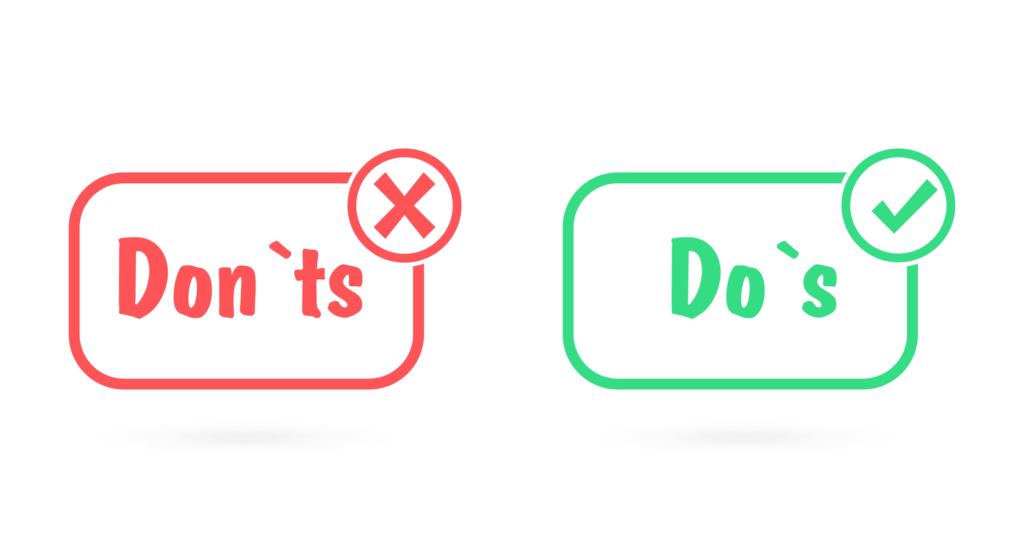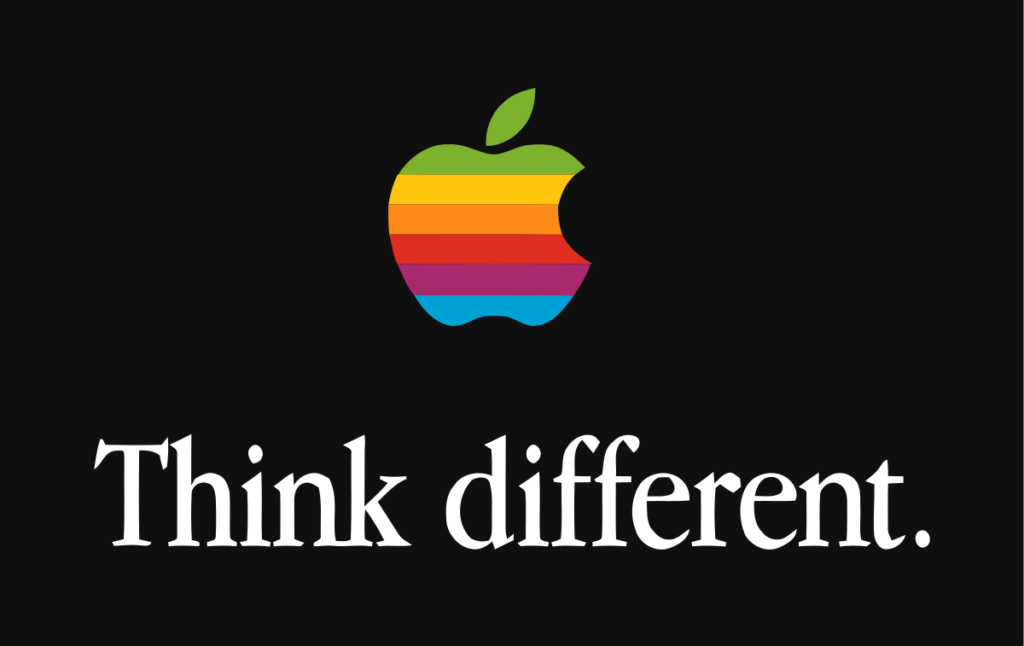In the world of marketing and advertising, persuasive copy is the secret ingredient that can make or break a campaign. The ability to craft compelling messages that captivate and convince your audience is essential for driving conversions and achieving your marketing goals.
One effective framework for persuasive copywriting is the AIDA model, which stands for Attention, Interest, Desire, and Action.
In this blog post, we will explore the AIDA model in detail, provide bad and good examples, discuss dos and don’ts, and showcase brands that have mastered the art of persuasive copy.
Real meaning of Copywriting?

Copywriting is a specialized skill that requires a deep understanding of human psychology and the ability to write clear, concise, and persuasive language.
A good copywriter can use words to create a sense of urgency, excitement, or desire in the reader. They can also use humor, storytelling, or other techniques to make their copy more engaging and memorable.
I. Understanding the AIDA Model
A. Attention

The attention stage is all about grabbing the reader’s interest right from the start. To do this successfully, your copy should have an attention-grabbing headline or opening line that sparks curiosity or addresses a problem your audience can relate to.
For instance, consider a bad example: “Buy Our Product Now!” This headline lacks creativity and fails to generate curiosity.
On the other hand, a good example like “Discover the Secrets to Effortless Weight Loss” instantly captures attention by offering a solution to a common problem.
B. Interest

Once you have captured your reader’s attention, it is crucial to maintain their interest. To do this, focus on providing valuable information, addressing their pain points, or sharing compelling stories.
Dos include using engaging language, incorporating storytelling elements, and highlighting the benefits of your product or service. Avoid generic phrases or clichés that can make your copy sound dull and uninteresting.
For instance, a bad example would be: “Our product is great; everyone loves it!” This statement lacks specificity and fails to create genuine interest.
In contrast, a good example like “Transform Your Skin with Our Organic, Dermatologist-Approved Skincare Line” showcases the unique selling points and generates genuine curiosity.
C. Desire

In the desired stage, you need to create a strong desire in your audience for your product or service.
To achieve this, focus on the emotional and practical benefits your offering provides. Use persuasive techniques such as demonstrating how your product solves a problem, appealing to the reader’s aspirations, or emphasizing the unique value proposition. Avoid making false claims or exaggerations that can erode trust.
For example, a bad example would be: “Our product will make you look 10 years younger overnight!” This claim is unrealistic and can lead to skepticism.
A good example “Experience the Confidence of a Brighter, Whiter Smile with Our Advanced Teeth Whitening System” highlights the emotional desire and the tangible benefits of the product.
D. Action

The action stage is where you prompt your audience to take the desired action, such as making a purchase, signing up for a newsletter, or contacting your business.
To create a strong call-to-action (CTA), use clear and compelling language, emphasize the benefits of taking action, and create a sense of urgency.
Avoid weak or generic CTAs that may not motivate your audience to act.
For instance, a bad example would be: “Click here to learn more.” This CTA lacks impact and does not provide a clear incentive.
On the other hand, a good example like “Limited Time Offer: Buy Now and Get 20% Off!” creates a sense of urgency and offers a tangible incentive to take immediate action.
According to a study by HubSpot, 70% of landing pages are not effective. This means that for every 10 landing pages you see, only 3 are likely to convert visitors into leads or customers.
Reason: The copy is not relevant to the target audience.
Want to Generate 1000s of Sales Qualified Leads for your E-commerce Store? Here are 7 Proven Methods: How you can generate 1000s of Leads for your business without Paid ads
II. Here is How a business can use Copy on your Landing Page to convert 4X More
Customers.

Attention:
1. Start with a compelling headline: Craft a concise and attention-grabbing headline that immediately communicates the unique value proposition or the problem your product.service solves.
2. Use subheadings and bullet points: Break down the key benefits or features of your offering using subheadings and bullet points to make the content scannable and engaging.
3. Incorporate captivating visuals: Utilize high-quality images or videos that are relevant to your product/service and visually appealing to capture attention.
Interest:
1. Provide a captivating introduction: Follow the headline with an engaging introduction that elaborates on the headline’s promise or addresses the pain points of your target audience.
2. Focus on benefits: Clearly highlight the specific benefits and advantages of your product/service. Use persuasive language to explain how it addresses customer needs or improves their lives.
3. Include social proof: Incorporate testimonials, reviews, or case studies from satisfied customers to build trust and credibility. This helps generate interest by showing that others have had positive experiences with your offering.
3. Desire:
1. Use persuasive copy: Craft persuasive copy that creates a desire in your visitors to own or experience the benefits of your product/service. Use emotional language, storytelling elements, and vivid descriptions to evoke strong desires.
2. Highlight unique selling points: Emphasize what sets your offering apart from competitors. Showcase features, innovations, or exclusive offers that make your product/service desirable and valuable.
3. Include visuals of the product/service in action: Use images, videos, or demonstrations that show your product/service being used or experienced. This helps visitors visualize themselves benefiting from it.
4. Action:
1. Create a clear call-to-action (CTA): Place a prominent and action-oriented CTA button that stands out from the rest of the page.
Use persuasive language in the CTA, such as “Get Started,” “Sign Up Now,” or “Claim Your Free Trial.”
2. Incorporate urgency or scarcity: Encourage visitors to take immediate action by adding time-limited offers, limited stock notifications, or countdown timers to create a sense of urgency.
3. Minimize distractions: Remove unnecessary links, navigation menus, or excessive content that can distract visitors from taking the desired action. Keep the focus solely on the CTA.
4. Optimization and Testing:
1. A/B test different elements: Continuously test variations of headlines, copy, visuals, CTAs, and overall layout to identify what resonates best with your audience. Measure the performance of each version and make data-driven decisions to optimize your landing page.
2. Monitor analytics: Track visitor behavior, conversion rates, bounce rates, and other relevant metrics using tools like Google Analytics. Analyze the data to gain insights into areas of improvement and make necessary adjustments to enhance the page’s effectiveness.
With the AIDA model and constantly iterating based on data and visitor feedback, you can create a landing page that effectively engages your audience, generates desire, and compels them to take action.
A good Landing page is not enough to boost sales. You need to craft a proper email marketing campaign to generate sales. Here is the 2023 Guide to Email Marketing: How to Build a Successful Campaign from Scratch
III. Dos and Don’ts of Persuasive Copywriting

A. Dos
1. Research your target audience thoroughly: Understand their needs, desires, pain points, and language to tailor your copy accordingly.
2. Use powerful and persuasive language: Choose words that evoke emotions, create vivid imagery, and convey the value of your offering.
3. Make your copy concise and focused: Keep your message clear and to the point. Eliminate unnecessary information or jargon that may confuse or overwhelm your readers.
4. Incorporate storytelling elements: Use narratives, anecdotes, or case studies to make your copy relatable and engaging.
5. Highlight the benefits and value proposition: Clearly communicate how your product or service solves a problem or fulfills a need for your audience.
6. Use social proof and testimonials: Showcase positive reviews, testimonials, or endorsements from satisfied customers to build trust and credibility.
7. Create a sense of urgency: Encourage your audience to take immediate action by emphasizing limited-time offers, exclusive deals, or time-sensitive benefits.
8. Test and optimize your copy: Continuously analyze and refine your copy based on data and feedback to improve its effectiveness and conversion rates.
B. Don’ts
1. Don’t rely solely on features or technical jargon: Instead of bombarding your audience with technical specifications, focus on how your product or service enhances their lives or solves their problems.
2. Avoid clichés and generic phrases: Stand out from the competition by using fresh, original language that resonates with your target audience.
3. Don’t make false claims or exaggerations: Be honest and transparent about what your product or service can deliver to maintain trust and credibility.
4. Avoid using passive voice and weak verbs: Use active and powerful verbs to create a sense of action and energy in your copy.
5. Don’t overwhelm the reader with too much information: Present the most important information concisely and clearly to avoid overwhelming or confusing your audience.
6. Avoid neglecting the design and formatting of your copy: Use headings, subheadings, bullet points, and visual elements to make your copy visually appealing and easy to scan.
III. Brands’ Examples of Persuasive Copy
A. Apple

Apple is known for its persuasive copywriting that captivates audiences and drives desire for its products.
Their attention-grabbing headlines, such as “Think Different,” immediately evoke curiosity and challenge the status quo.
Apple’s storytelling approach, highlighting how their products enhance creativity and empower individuals, creates a strong emotional connection.
Their persuasive CTAs, like “Discover a new world with iPhone,” inspire action and exploration.
B. Nike

Nike’s persuasive copywriting is built on inspiring and motivating their audience.
They tap into the emotions and aspirations of their customers by using powerful slogans like “Just Do It.”
Nike’s copy often features real-life stories of athletes overcoming challenges, which resonates with their target audience and creates a sense of aspiration.
Their CTAs, such as “Join the movement,” encourage people to become a part of the Nike community.
C. Coca-Cola

Coca-Cola’s persuasive copywriting aims to build brand loyalty and evoke nostalgic feelings.
They leverage storytelling to create emotional connections and promote inclusivity. Coca-Cola’s messages often revolve around sharing moments of happiness and togetherness.
Their CTAs, like “Open happiness,” encourage people to experience joy and connect with others while enjoying Coca-Cola.
Myths vs Facts in Copywriting:

Myth 1: Long copy is always better than a short copy..
Fact: The effectiveness of copy is not determined by its length but by its ability to communicate the message clearly and resonate with the target audience. Both short and long copy can be effective depending on the context and objectives.
Myth 2: Copy should focus solely on product features.
Fact: While product features are important, the effective copy goes beyond features and highlights the benefits and solutions it offers to the audience. Emphasizing how the product or service solves a problem or fulfills a need is key.
Myth 3: Copy should be filled with industry jargon and technical terms.
Fact: Using complex jargon and technical terms can alienate the audience and make the copy difficult to understand. Effective copy uses simple and clear language that connects with the target audience and avoids unnecessary complexity.
Myth 4: Copy should appeal to everyone.
Fact: Trying to appeal to a broad audience often dilutes the message and fails to resonate with anyone. Effective copy targets a specific audience and speaks directly to their needs, desires, and pain points.
Myth 5: Copywriting is all about being persuasive and convincing.
Fact: While persuasion is an important aspect of copywriting, it should be based on honesty and authenticity. Effective copy builds trust, establishes credibility, and provides valuable information to the audience.
Myth 6: Copywriting is a one-time task.
Fact: Copywriting is an ongoing process that requires continuous improvement and optimization. Testing different copy variations, analyzing data, and making refinements based on audience response is essential for success.
Myth 7: Copy should focus on the company, not the customer.
Fact: Effective copy puts the customer at the center and focuses on their needs, desires, and aspirations. It highlights how the product or service can benefit the customer and improve their lives.
Myth 8: Copywriting is only about words.
Fact: Copywriting is not limited to words alone. Effective copy incorporates other elements like visuals, design, and formatting to create a cohesive and compelling message.
Myth 9: Copy should be filled with hype and exaggeration.
Fact: While copy should be attention-grabbing, using hype and exaggerated claims can undermine credibility. Effective copy strikes a balance between being persuasive and providing accurate information.
Myth 10: Copywriting is a solitary task.
Fact: Collaboration and feedback are valuable in copywriting. Seeking input from colleagues, clients, and target audience members can provide fresh perspectives and help refine the copy for better results.
By understanding these myths and embracing the facts of copywriting, you can create compelling and persuasive copy that resonates with your audience, drives engagement, and achieves your desired goals.
Here are a few popular AI Tools for Copywriter :
- Grammarly
- Hemingway Editor
- Copyscape
- Copy.ai
- WordAI
- SEMrush Writing Assistant
- Frase
- Clear scope
- Topic Research Tools (BuzzSumo, AnswerThePublic).
In 2023-24 Video ads are performing very well. But it’s very time-consuming. Here are the 8 Best AI Video Editor Software Tools Used to Save your Time & Effort
In Conclusion :
Crafting persuasive copy using the AIDA model is a powerful way to engage your audience, create a desire for your offering, and drive action.
By paying attention to the attention, interest, desire, and action stages, you can create copy that captivates, convinces, and converts.
With practice and creativity, you can become a master of persuasive copywriting, achieving your marketing goals and connecting with your audience on a deeper level.


